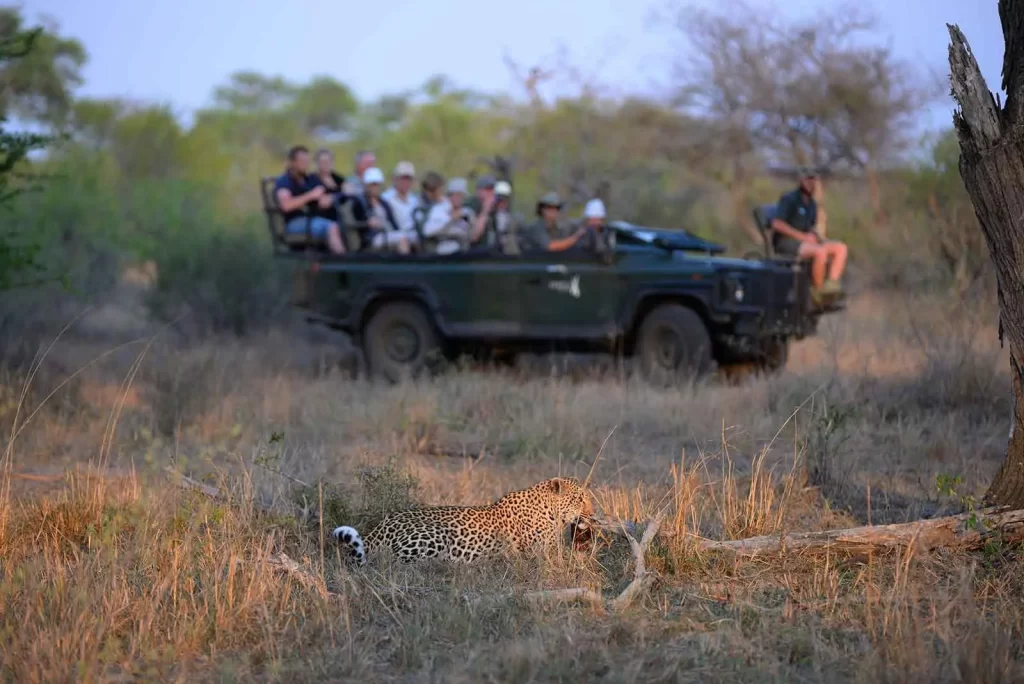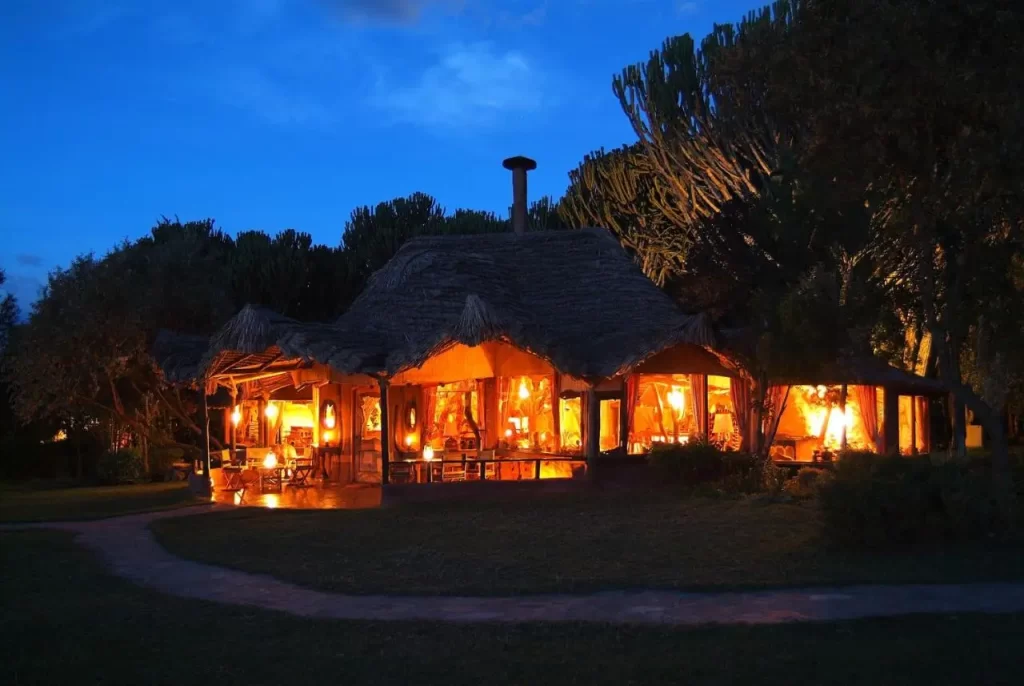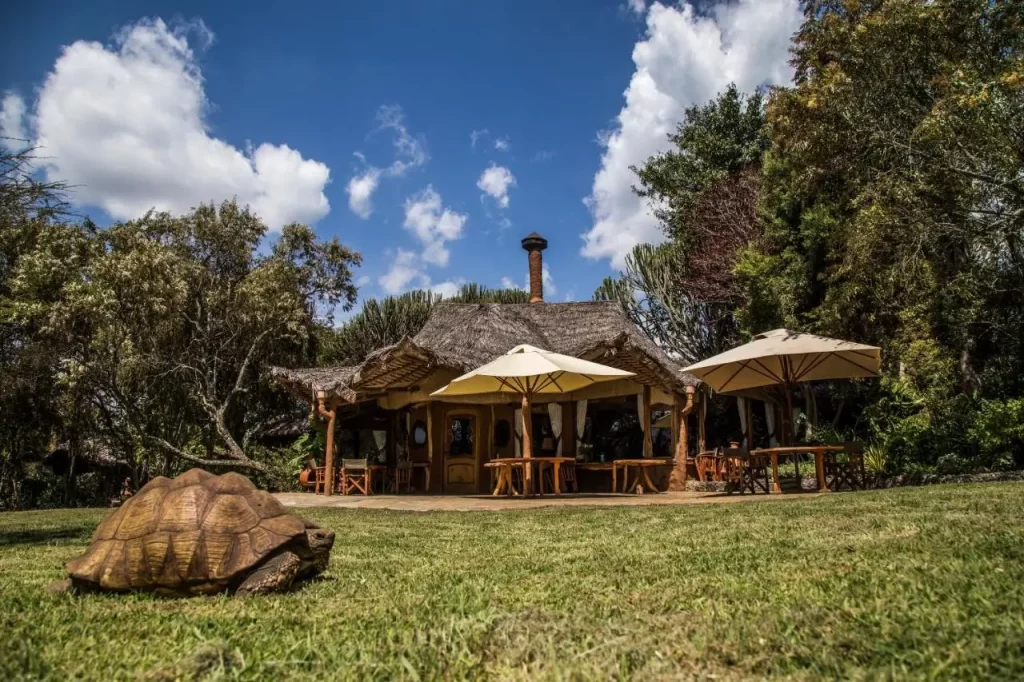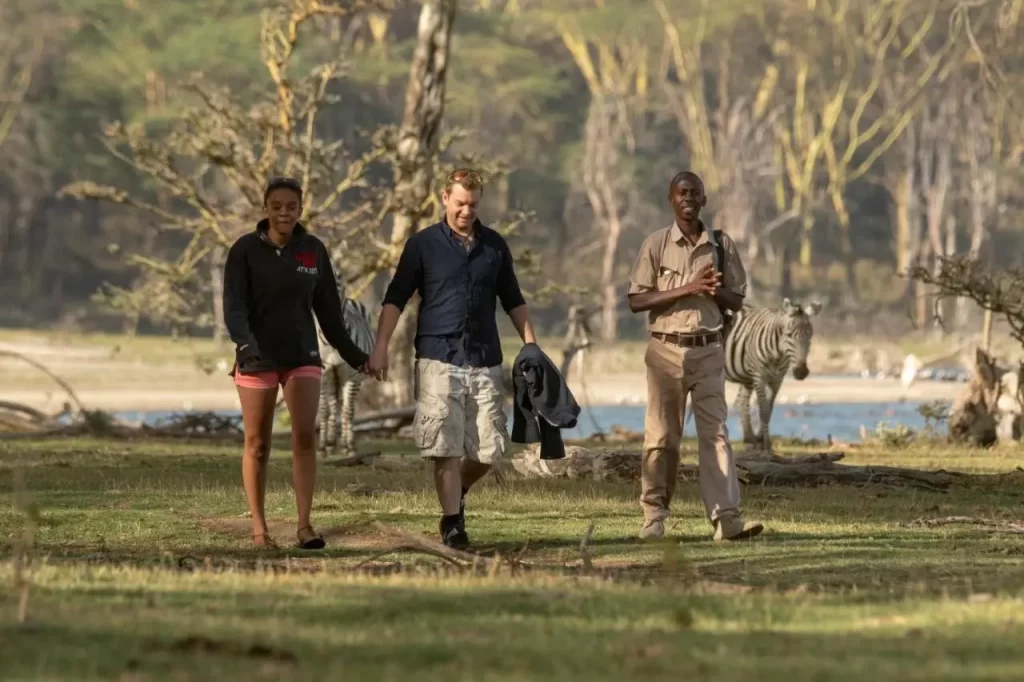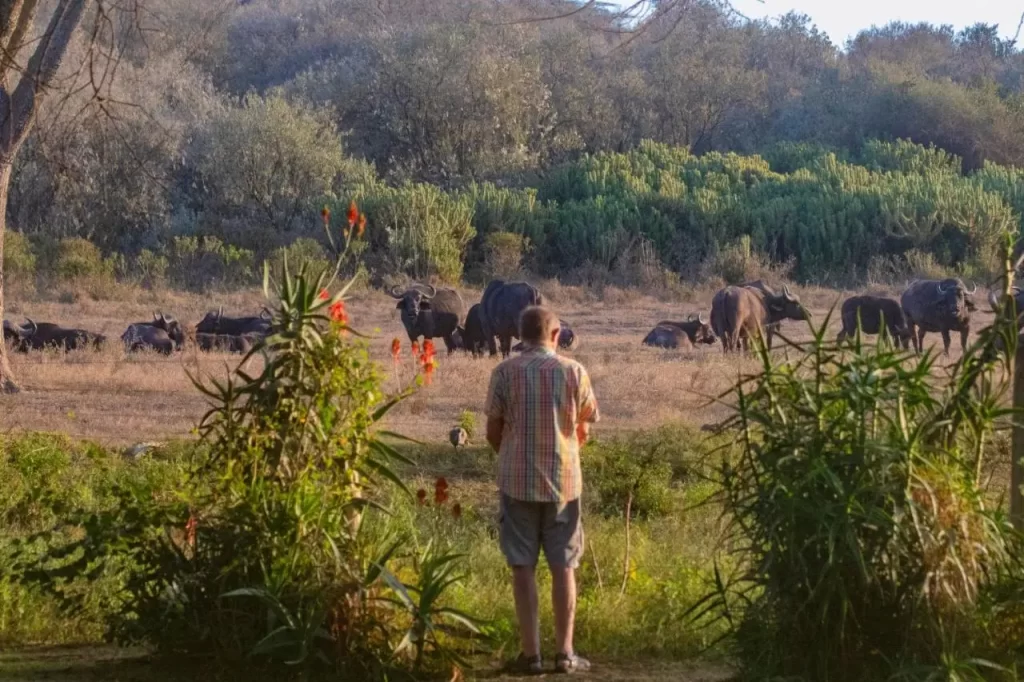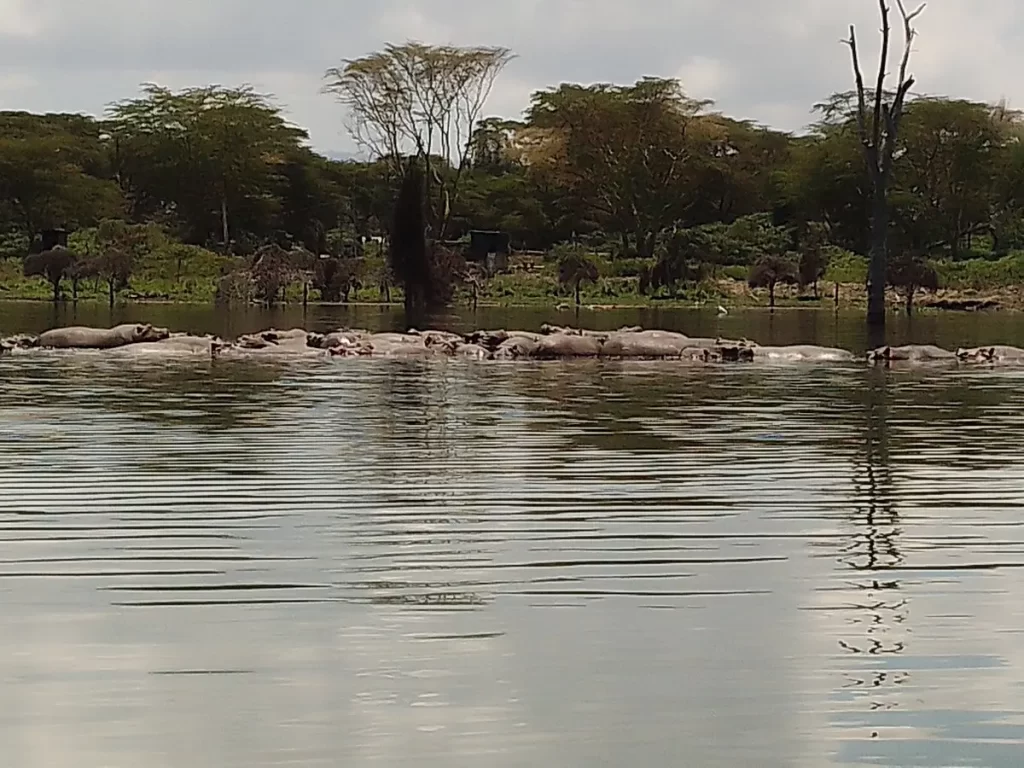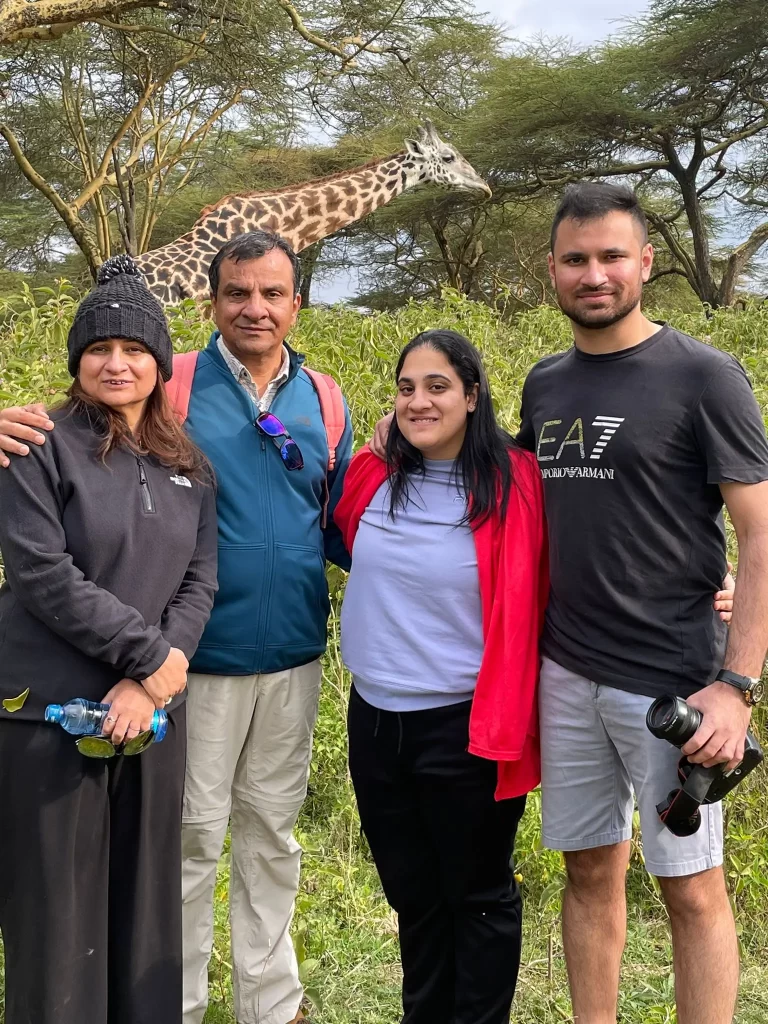Lake Naivasha - Travel Guides, Packages, Cost & More.
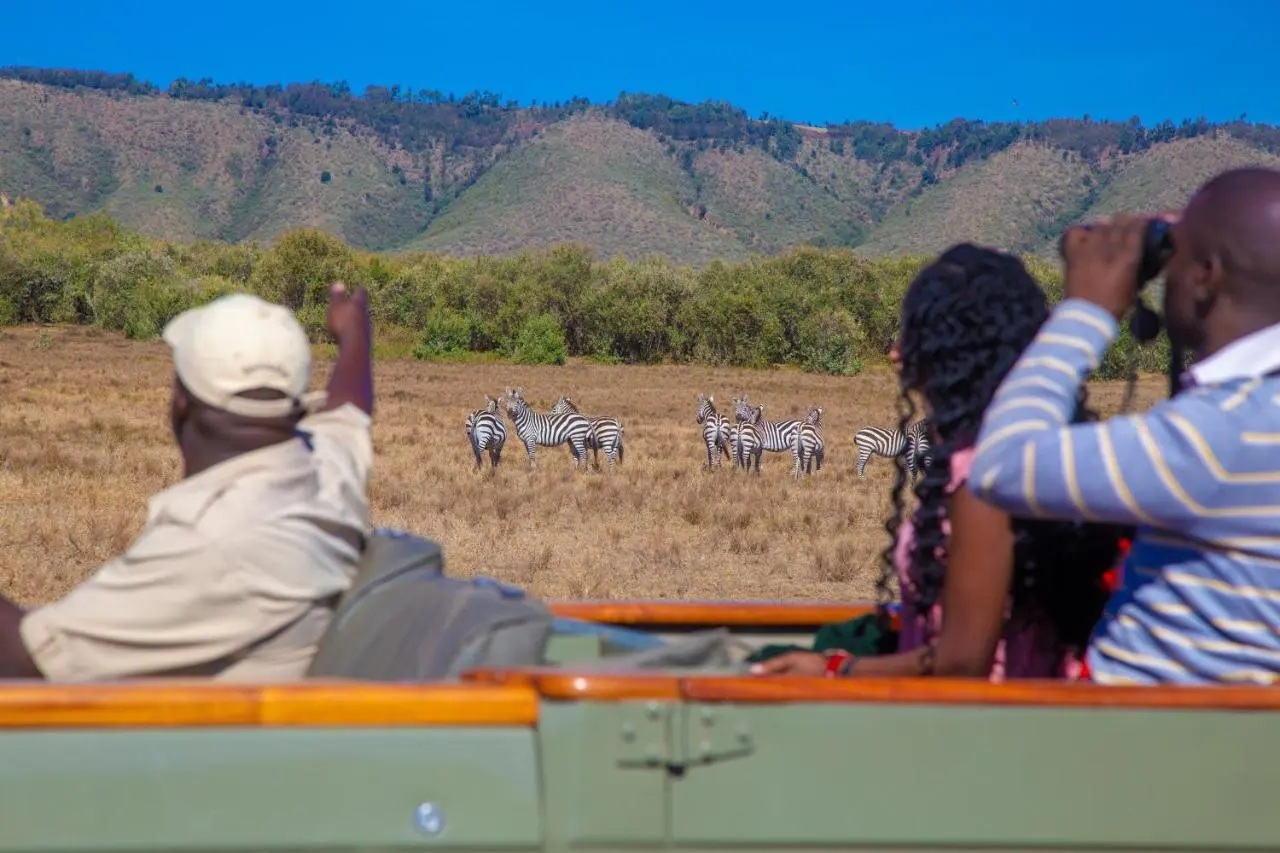
Nestled within the Great Rift Valley in the heart of Kenya, Lake Naivasha emerges as a shimmering jewel, a freshwater haven of stunning landscapes and rich biodiversity.
This paradise offers a unique blend of serene beauty and thrilling wildlife encounters, making it an irresistible destination for nature enthusiasts.
This blog post will guide you through the magnificent world of Lake Naivasha, from its breathtaking panoramas to its abundant wildlife, and provide practical tips for a memorable visit. We will also share our contact details and our most booked Lake Naivasha Packages
How to Contact Us to Start Planning Your Lake Naivasha Safari
There’s no better time to plan your Kenya Safari to Lake Naivasha and other destinations than now! Contact us via WhatsApp or phone at +254-704-532-105.
We are also reachable through email at safarioffers@kenyaluxurysafari.co.uk or safarioffers@ajkenyasafaris.com.
If you prefer, leave us your details by filling out our “Book a Safari Form” and we will be in touch within 12 hours.
Our Most Booked Lake Naivasha Resort
Lake Naivasha - Photos of lake Naivasha Safaris
Lake Naivasha – Key Takeaways
- Lake Naivasha, situated in Kenya’s Great Rift Valley, boasts diverse flora, fauna, and picturesque landscapes, making it a popular destination for tourists and nature enthusiasts alike.
- The lake provides a sanctuary for over 400 species of many birds and various wildlife, offering activities such as birdwatching, boat safaris, and exploring adjacent game sanctuaries and national parks.
- Human activities have impacted Lake Naivasha’s ecosystem, leading to issues like invasive species and pollution, but conservation efforts are in place to promote sustainable tourism and protect the lake’s biodiversity.
Discovering Lake Naivasha: A Freshwater Oasis
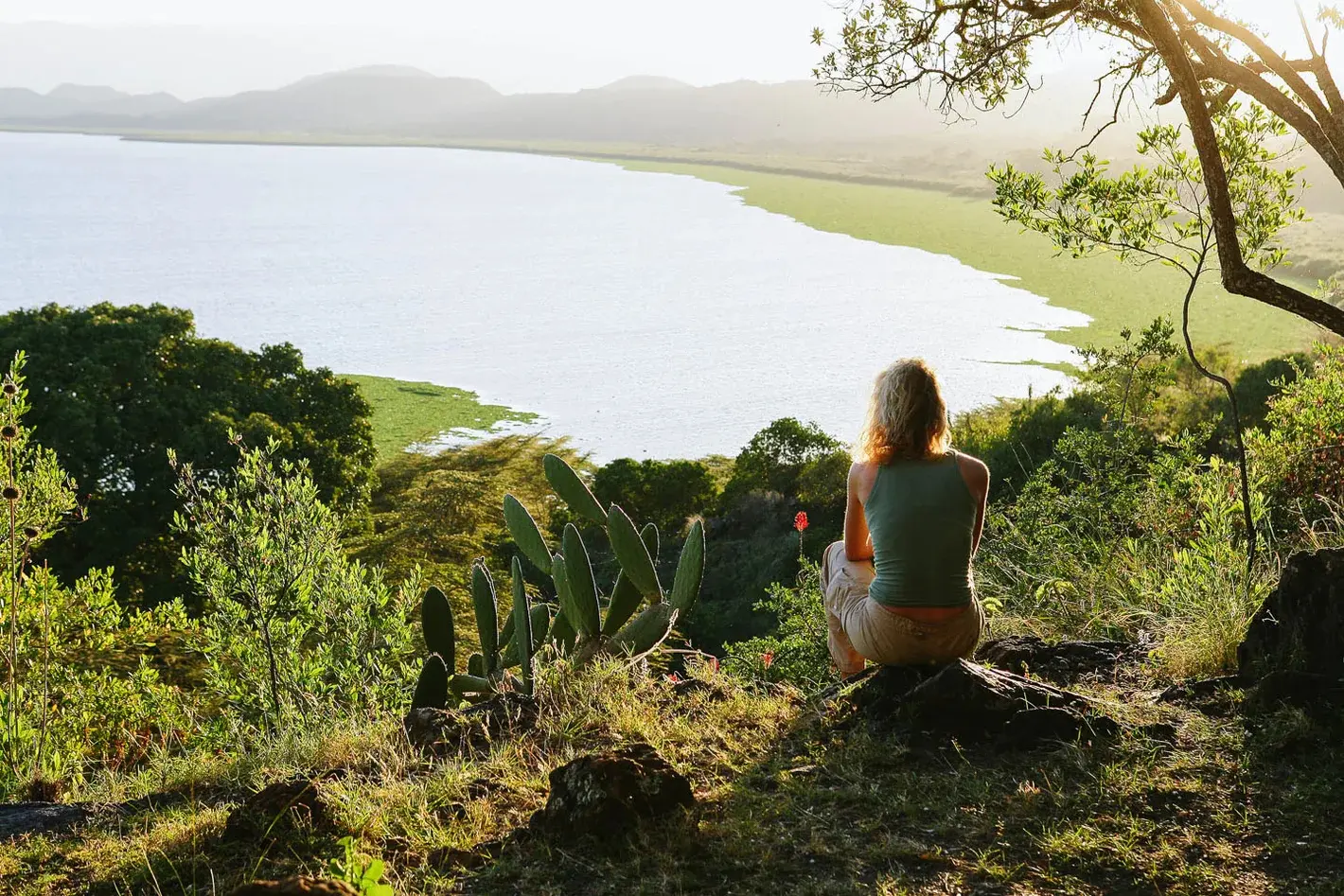
Lake Naivasha, a gem in the Rift Valley, is situated northwest of Kenya’s capital, Nairobi, outside the town of Naivasha in Nakuru County. At an elevation of 1,884 meters and an average depth of 6 meters, it is the highest of the Eastern Rift Valley’s freshwater lakes.
Two permanent rivers and several transient streams supply it with water, and despite completely drying up in the early 20th century, it has resiliently sprung back to life. The name ‘Lake Naivasha’ is derived from the local Maasai expression “Nai’posha,” which translates to “rough water,” symbolizing its occasional turbulent conditions.
The lake’s geographical location and physical attributes contribute to its status as a freshwater oasis in the Rift Valley. As a freshwater lake, it occupies a unique position in the eastern rift valleys’ lakes system, alongside Lake Victoria and lake Nakuru of Kenya.
The lake’s surface area of approximately 139 square kilometers makes it one of the largest in the Kenyan Rift Valley and provides a habitat for a diverse range of flora and fauna, enriching the lake’s ecosystem and making it a treasure trove of biodiversity. The calmness of the lake’s surface further adds to its serene beauty.
The Beauty of Lake Naivasha
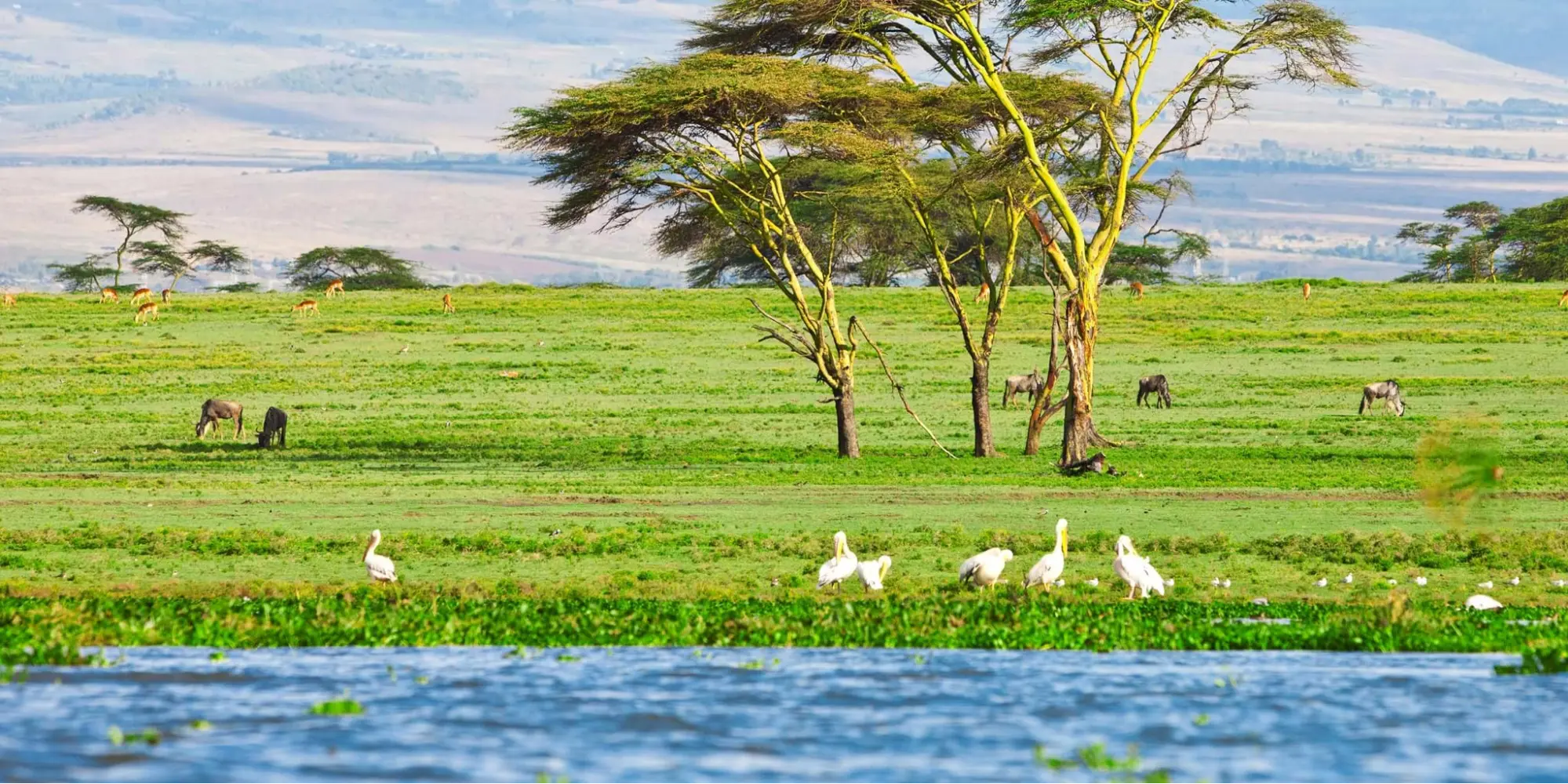
The beauty of Lake Naivasha is as diverse as its ecosystem. The lake’s landscape is distinguished by:
- Papyrus swamps
- Acacia woodlands
- Forests
- Remnants of volcanic activity
Being situated at the highest elevation in the Kenyan rift valley, it experiences a lengthy cool dry season from July to October, as well as distinct changes in scenery brought about by the wet seasons. The lake’s unique ecosystem supports a diverse array of flora and fauna, making it a haven for wildlife enthusiasts. Tanzania is also another country with lakes of such features.
Furthermore, the allure of Lake Naivasha’s picturesque landscapes extends beyond its immediate surroundings. Destinations such as Hell’s Gate National Park, Mount Longonot National Park, Crescent Island, and Crater Lake Game Sanctuary are celebrated for their stunning landscapes and captivating views. Indigenous stories add to the mystique and attractiveness of the shallow lake, depicting it as a location with turbulent waters, captivating natural scenery, floating islands of Nile cabbage, and dense papyrus. With such a wealth of natural beauty, it’s no wonder that Lake Naivasha is a sought-after destination for tourists worldwide.
Lake Naivasha’s Rich Biodiversity
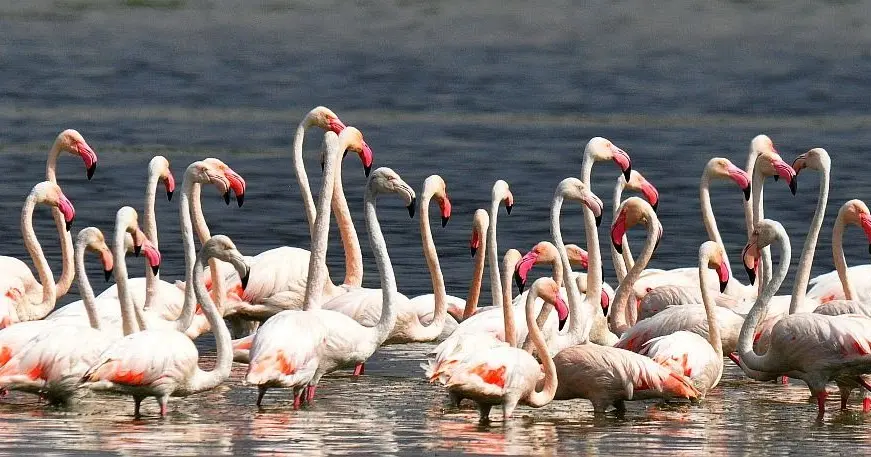
Lake Naivasha serves as a refuge for a diverse range of flora and fauna. It is home to over 400 bird species and a range of other wildlife, including hippos, making it a popular destination for birdwatching. Some of the bird species that you might spot here include:
- kingfishers
- eagles
- pelicans
- cormorants
- egrets
The lake’s waters not only create a freshwater environment that supports a thriving fish population, but also attract a significant number of water birds. The lake’s biodiversity is not limited to its abundant bird population. The waters are home to a variety of indigenous fish species such as:
- blue spotted tilapia
- carp
- large-mouthed bass
- Nile tilapia
- African catfish
The lake also provides a habitat for endangered wildlife such as the elusive Basra Reed Warbler, which is seldom observed along the lake shore. All these diverse species contribute to the rich biodiversity of Lake Naivasha, making it a true gem in Kenya’s Great Rift Valley.
Journey to Lake Naivasha: Getting There and Accommodation Options
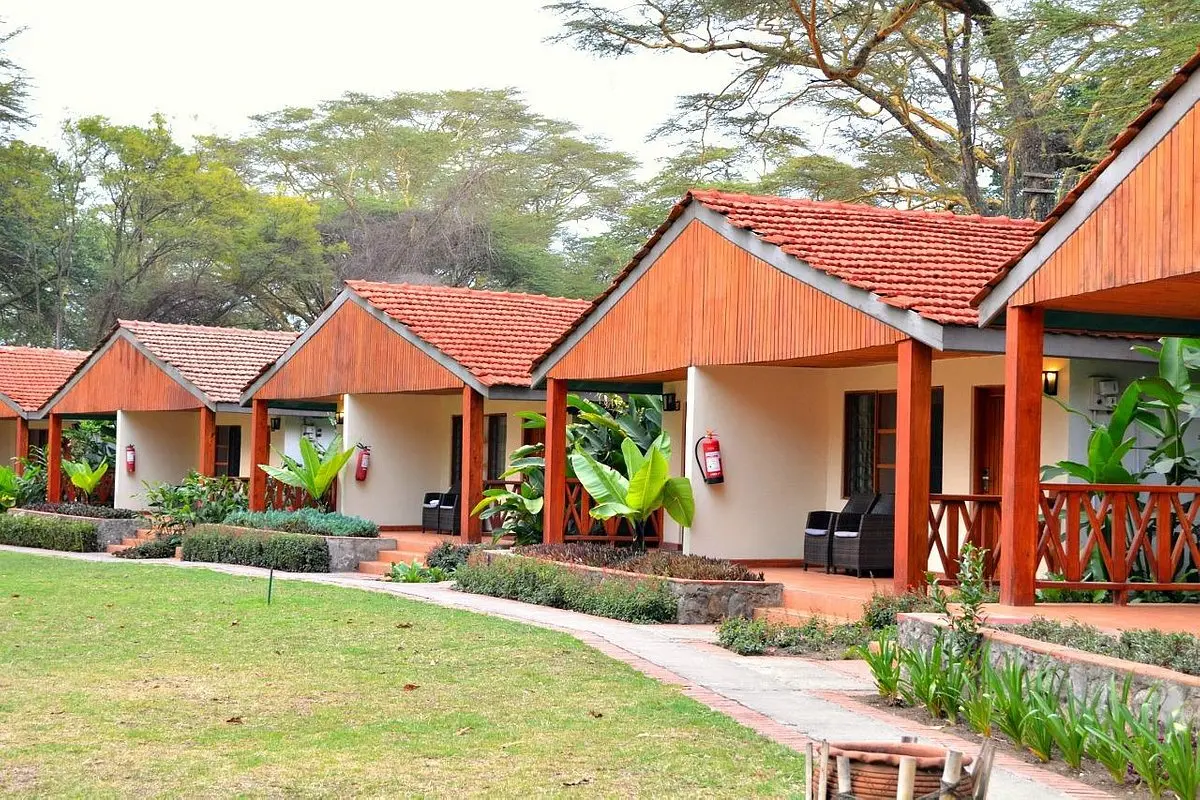
The journey from Nairobi to Lake Naivasha is as captivating as the destination itself. Whether you prefer a private tour or public transportation, each route presents a unique experience and a chance to witness the breathtaking landscapes of the Rift Valley. Once there, a range of lodging options await, offering a blend of comfort, convenience, and stunning views of the lake. Although the journey from Nairobi to Lake Naivasha is relatively short, it promises to create lasting memories. Similarly, the accommodation options around the lake cater to a wide range of preferences, ensuring that every visitor can find a place to relax and unwind after a day of exploration. From luxury lodges to budget-friendly campsites, there’s something for every traveler, whether they’re visiting Lake Naivasha or Lake Nakuru.
Traveling from Nairobi to Lake Naivasha
The journey from Nairobi to Lake Naivasha is an adventure that sets the tone for your entire visit. Whether you choose a private tour or public transportation, each option offers a unique experience with reasonable rates and stunning views along the scenic B3 Escarpment Road. The driving distance between the two locations is approximately 77.1 km, and the average driving time is about two and a half hours.
If you opt for public transportation, buses and matatus from Nairobi’s City Centre will take you to Naivasha Town. From there, you can proceed to Lake Naivasha using another bus. The duration of the journey is approximately 1 hour and 30 minutes, and the ticket prices range from $1 to $7. No matter your chosen mode of transport, the journey from Nairobi to Lake Naivasha promises stunning landscapes and a sense of anticipation for the forthcoming adventures.
Top Lodges and Resorts around Lake Naivasha
Upon arrival at Lake Naivasha, you’ll find a variety of accommodation options. Some popular choices include:
- Lake Naivasha Sopa Lodge: renowned for its exquisite gardens and close proximity to the lake
- Elsamere Lodge: offers historical significance and a tranquil setting
- Sawela Lodges: a well-regarded hotel in the vicinity, offering a range of services
Each lodge offers a unique experience and caters to a variety of preferences. Here are some options to consider:
- Lake Naivasha Resort: This lodge offers luxurious amenities and is perfect for those seeking a peaceful retreat.
- Sawela Lodges: If you prefer a tranquil setting, Sawela Lodges is the ideal choice.
- Other options: There are many other lodges and resorts around Lake Naivasha that provide the perfect base for exploring this stunning region.
Experiencing Lake Naivasha: Activities and Attractions
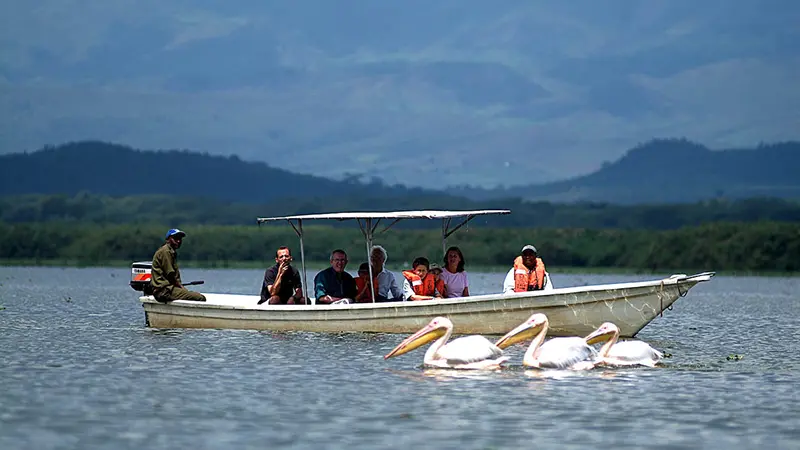
Lake Naivasha serves as a paradise for both nature enthusiasts and adventure seekers. The lake offers a wealth of activities and attractions that cater to a variety of interests, including:
- Birdwatching
- Wildlife viewing
- Scenic boat rides
- Hiking and nature walks
- Fishing
- Cycling
- Horseback riding
Whether you’re an avid birdwatcher, a wildlife enthusiast, or a lover of scenic landscapes, Lake Naivasha promises a truly immersive experience. The lake’s attractions range from thrilling boat safaris to tranquil game sanctuaries and challenging hiking trails. Whether you prefer observing wildlife from the comfort of a boat or exploring the wilderness on foot, Lake Naivasha offers a variety of experiences that are sure to leave you with lasting memories.
Boat Safaris: Up Close with Wildlife
One of the most popular activities at Lake Naivasha is the boat safari, which offers close encounters with a range of wildlife. From the comfort of your boat, you’ll have the opportunity to observe hippos, lesser flamingos, and various bird species, offering an intimate view of the lake’s rich biodiversity.
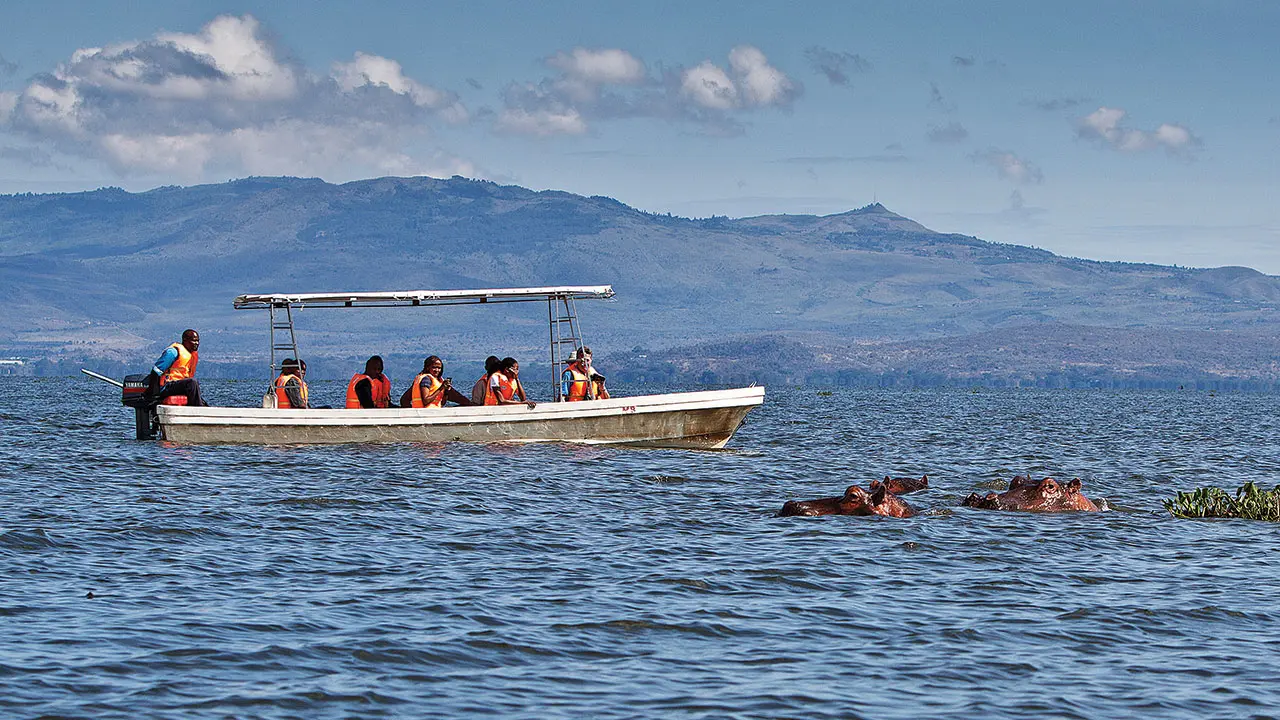
The safaris typically last about an hour, allowing ample time to soak in the scenery and wildlife sightings. The experience of gliding along the lake’s calm waters, surrounded by the sounds of nature, is truly one-of-a-kind. It’s an adventure that offers a unique perspective of the lake and its inhabitants, making it a must-do activity during your visit.
Crescent Island Game Sanctuary
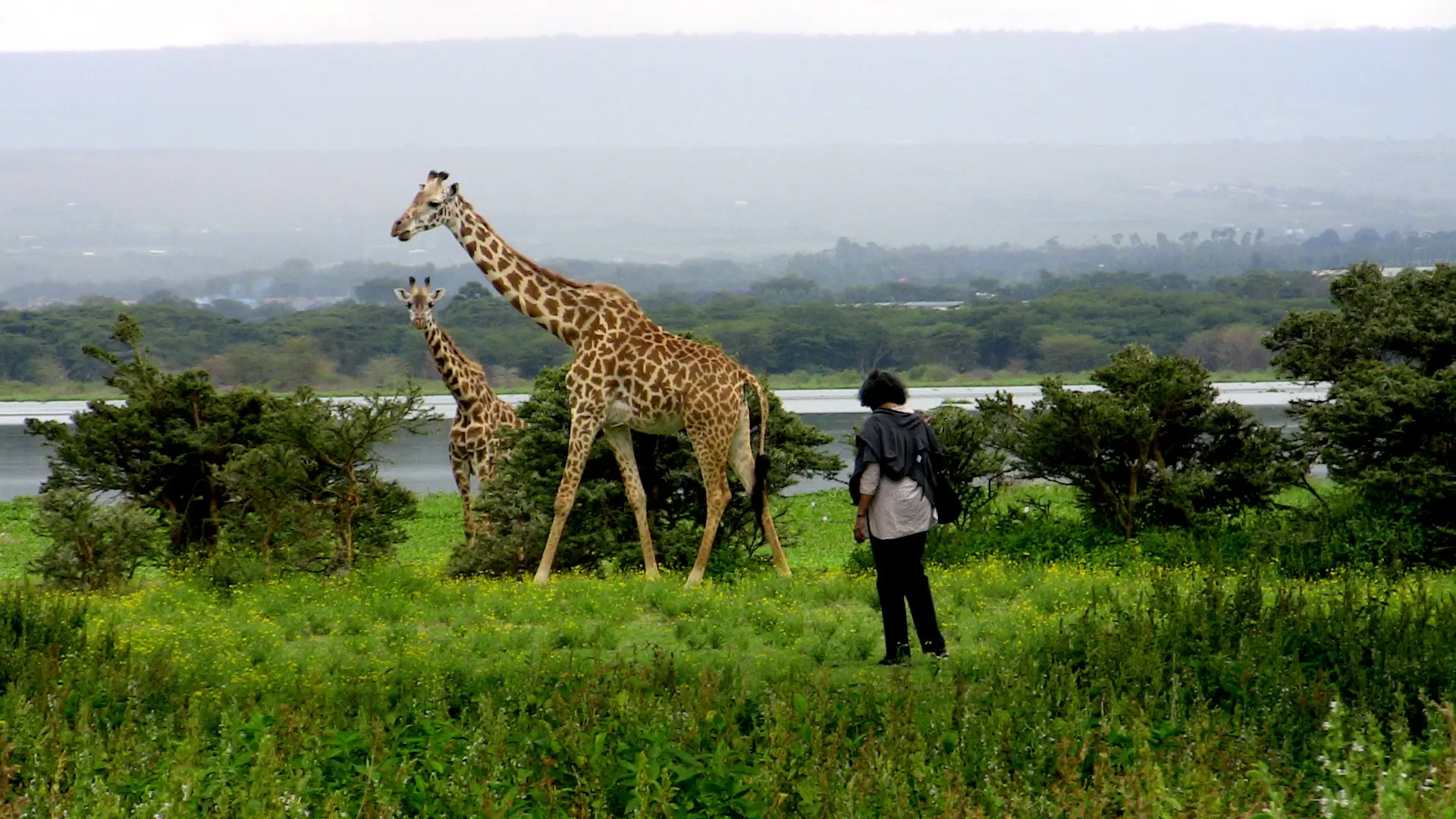
Crescent Island Game Sanctuary is another major attraction at Lake Naivasha. Located on Crescent Island, a crescent moon-shaped landmass situated on the eastern shore of Lake Naivasha, it offers an opportunity to observe resident giraffes, zebras, and various other wildlife in their natural habitat.
The sanctuary provides a distinctive experience of a walking safari, allowing guests to closely encounter the resident wildlife. It is also home to a diverse array of bird species, making it a birdwatcher’s paradise. Whether your interests lie in animals or birds, the Crescent Island Game Sanctuary promises an unforgettable experience.
Hiking Adventures in Crater Lake Game Sanctuary and Mount Longonot National Park
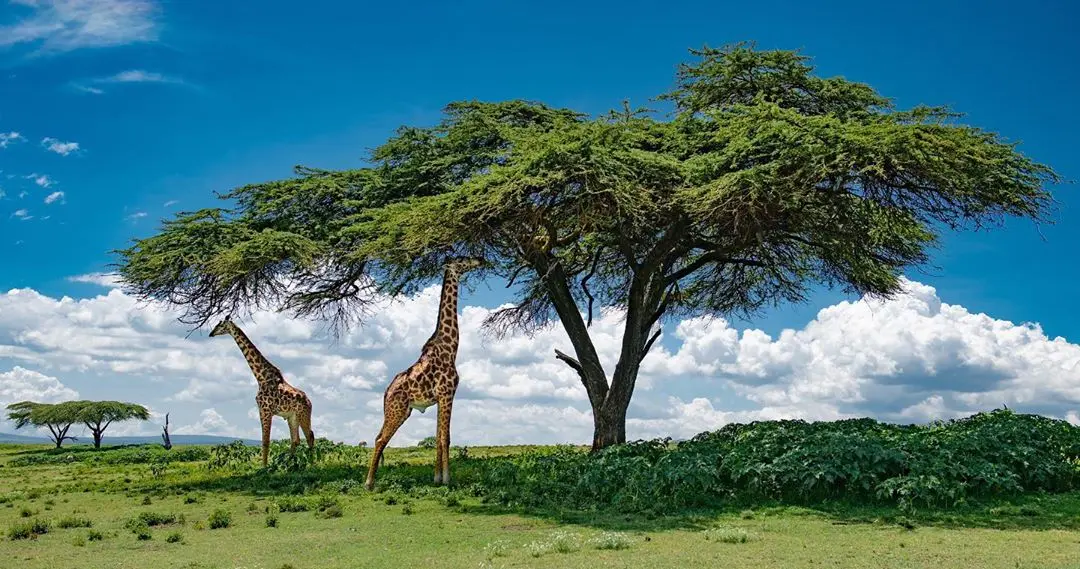
For those who prefer to explore on foot, Lake Naivasha offers plenty of hiking opportunities. The Crater Lake Game Sanctuary, Mount Longonot National Park, and Lake Nakuru National Park are two popular destinations for hiking enthusiasts.
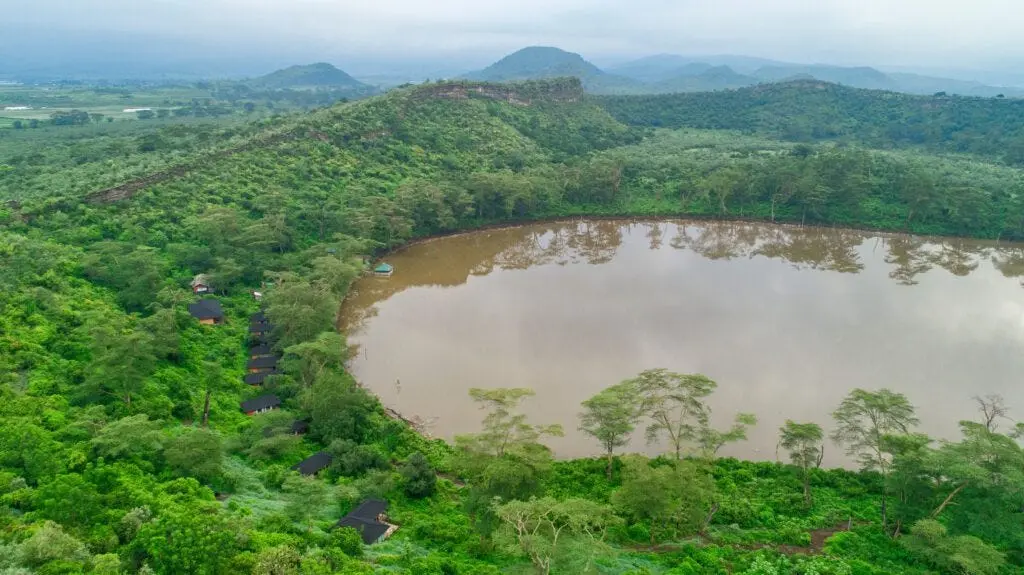
The Crater Lake Game Sanctuary offers scenic trails and a chance to spot giraffes, zebras, and over 150 bird species. On the other hand, Mount Longonot National Park offers a more challenging hiking experience, with a climb that takes around 4-5 hours. Regardless of your fitness level or hiking experience, these destinations offer an excellent opportunity to immerse yourself in the natural beauty of the region and enjoy stunning views of the Rift Valley.
The Flora and Fauna of Lake Naivasha
The diversity of Lake Naivasha’s flora and fauna mirrors that of its landscape. The lake is home to over 400 bird species and a range of other wildlife, making it a popular destination for nature enthusiasts. It also houses a substantial hippopotamus population, with a minimum of 400 hippos residing in its surroundings.
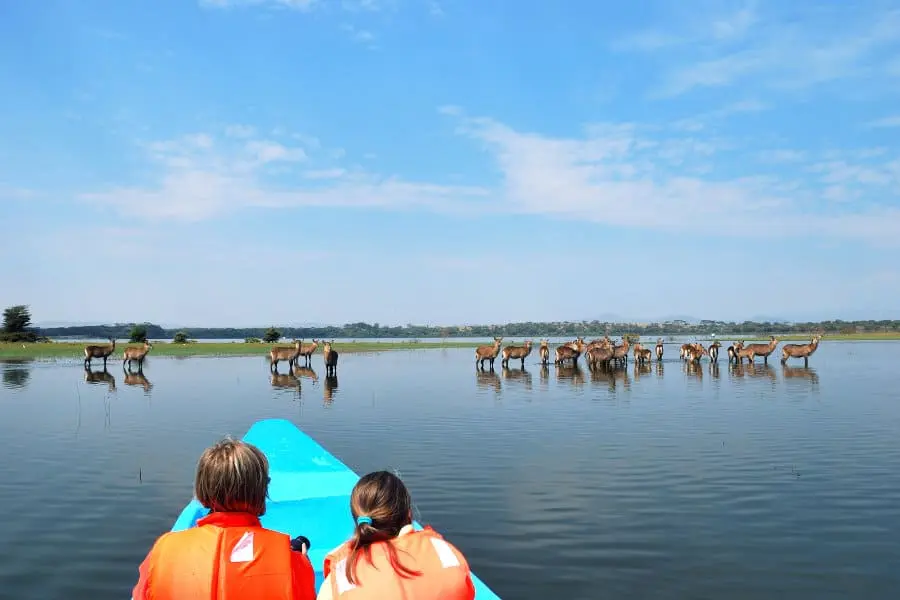
From the many bird species that adorn the lake’s surface to the hippos that inhabit its waters, Lake Naivasha is a living testament to nature’s abundance. Lake Naivasha’s diverse flora and fauna add to its charm and play a key role in sustaining its delicate ecosystem.
The World of Birds: Flamingos and Beyond
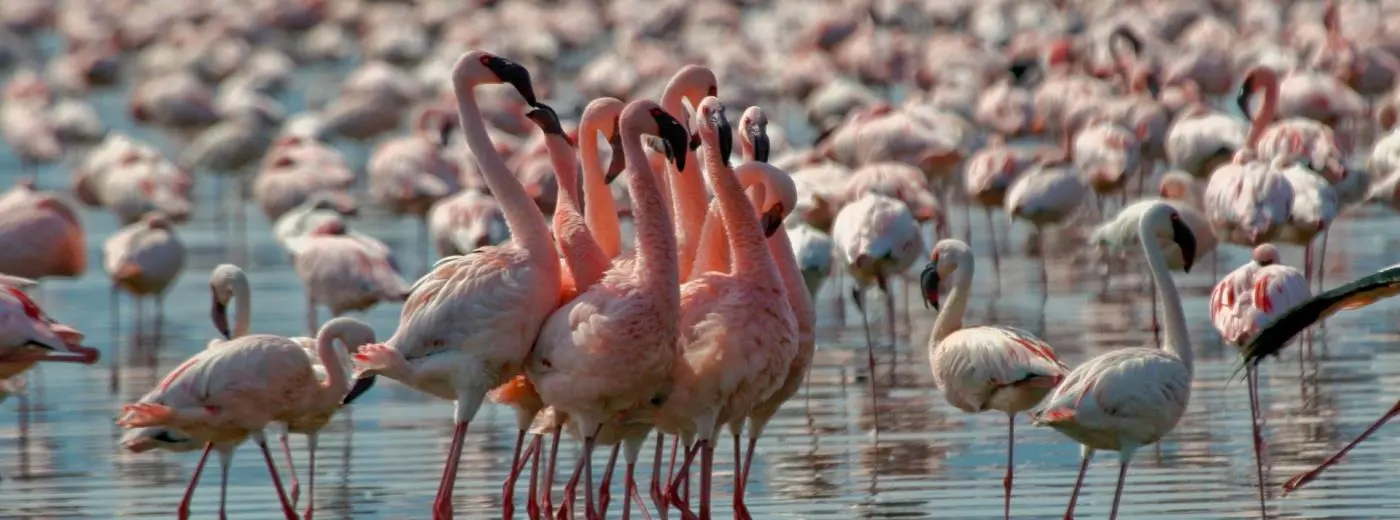
Lake Naivasha is a birdwatcher’s paradise. The lake’s diverse avian population includes over 400 bird species, making it a prime destination for birdwatching. The distinctive traits of African fish eagles and the captivating presence of flamingos are just some of the sights that await bird enthusiasts at Lake Naivasha. The best time to observe flamingos at Lake Naivasha is during the rainy season, between November and May. Whether you’re an avid birdwatcher or a casual observer, the variety of bird species at Lake Naivasha offers a delightful spectacle that is sure to captivate your senses.
The Hippo Haven: Life in the Water
Hippos are another major attraction at Lake Naivasha. With over 400 individuals residing in the lake’s waters and surrounding areas, these magnificent creatures offer an unforgettable sight. Visitors can witness their highly territorial and occasionally aggressive behavior, particularly within the water, as they defend their territory against intruders.
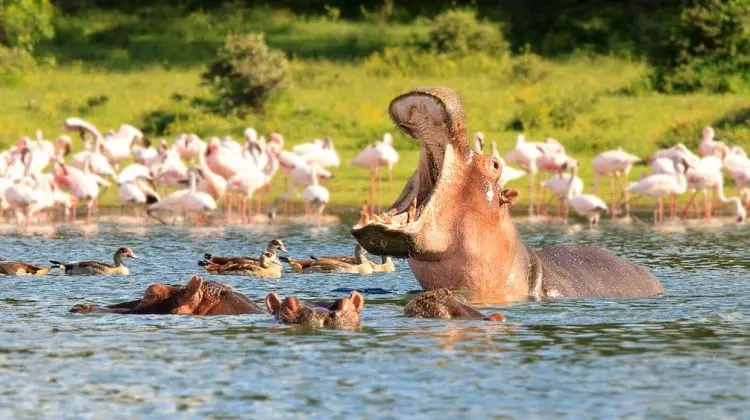
Hippos play a crucial role in sustaining the ecosystem of Lake Naivasha. They promote a diverse bird population and influence the biogeochemistry and ecology of the freshwater ecosystem. Whether seen from the safety of a boat or the shoreline, the sight of these majestic creatures is sure to leave you in awe.
The Impact of Human Activity on Lake Naivasha’s Ecosystem
Lake Naivasha’s beauty and biodiversity are certainly captivating, but the impact of human activity on its ecosystem cannot be overlooked. From the introduction of invasive species to overfishing and pollution, human activity has posed significant challenges to the lake’s ecosystem.
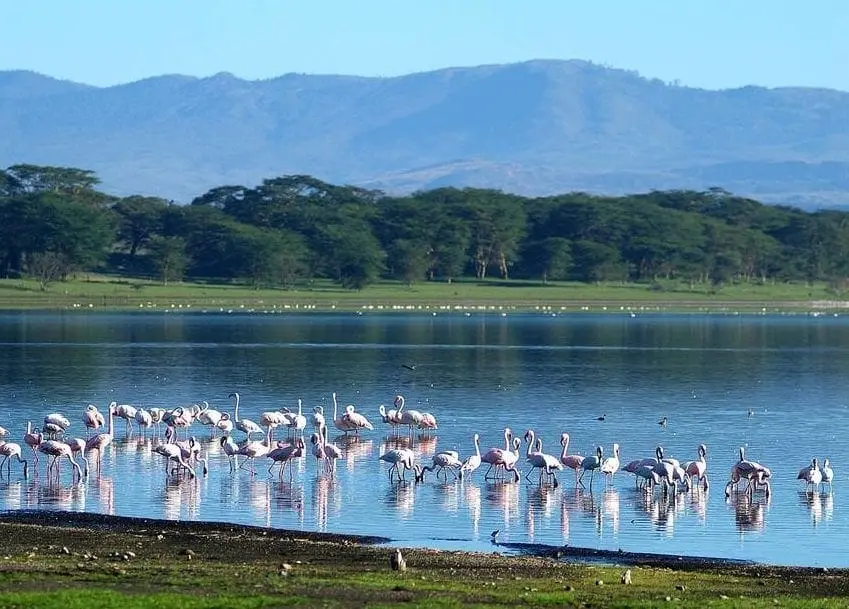
In spite of these challenges, endeavours are underway to preserve Lake Naivasha’s unique environment. Conservation measures include managing the population of invasive species, promoting sustainable fishing methods, and minimizing the influx of pollutants into the lake. These endeavors aim to ensure that Lake Naivasha continues to thrive as a haven of natural beauty and biodiversity.
The Common Carp Invasion
One significant impact on Lake Naivasha’s ecosystem has been the introduction of the carp. This invasive species has disrupted the balance of the ecosystem, leading to a decline in native fish species and increased water turbidity. The common carp was introduced to Lake Naivasha accidentally during the 1998/99 El-Nino rains, potentially as a result of escaping from fish farms located near the lake. Their rapid growth, high fecundity, and the ability to thrive in a wide range of aquatic habitats have contributed to their thriving population. Despite the challenges posed by the carp, efforts are being made to manage their population and mitigate their impact on the lake’s ecosystem.
Conservation Efforts and Sustainable Tourism
Efforts to preserve Lake Naivasha’s ecosystem encompass a range of initiatives. From the restoration of forest ecosystems to the mitigation of land degradation, various measures are being implemented to safeguard this unique environment. Prominent organizations such as the World Wildlife Fund and the Lake Naivasha Riparian Association are actively engaged in these conservation efforts. The government of Kenya, at both national and county levels, is also actively involved in these initiatives. Aside from these efforts, sustainable tourism practices are being advocated to minimize the impact of tourism activities on the lake’s natural attractions. These measures aim to ensure that Lake Naivasha continues to be a sanctuary for future generations to appreciate and enjoy.
Best Time to Visit Lake Naivasha
The timing of your visit to Lake Naivasha is an important factor to consider. To minimize the presence of crowds, it’s advisable to visit during the weekdays. The lake’s climate features brief, warm, and cloudy summers, as well as brief, cool, dry, and partly cloudy winters. The average temperature varies from 50°F to 77°F (10°C to 25°C) throughout the year, accompanied by an average annual precipitation of around 49 inches (1244 mm). However, irrespective of the time of your visit, Lake Naivasha guarantees a captivating experience. Whether you choose to visit during the warm summers or the cool winters, the lake’s stunning landscapes and rich biodiversity ensure an unforgettable experience. Do you know where is lake victoria located? It’s one of the lakes with similar features as lake Naivasha.
Tips for a Memorable Lake Naivasha Experience
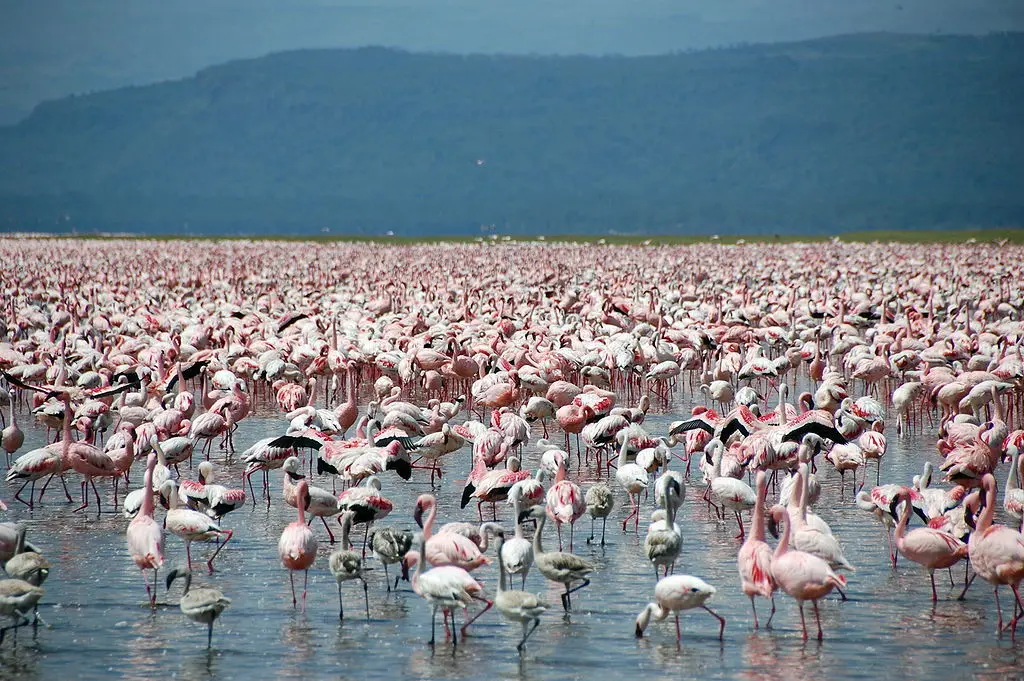
A few tips and recommendations can help you maximize your Lake Naivasha experience. The most effective approach to fully appreciate the rich biodiversity of Lake Naivasha is by partaking in a boat ride on the lake. This activity is particularly advisable for bird-watching and offers an exceptional opportunity to observe a diverse range of bird species.
A variety of accommodation options are available to suit your preferences. Whether you prefer the luxury of a resort or the authenticity of a local lodge, you’re sure to find a place that suits your needs. Lastly, remember that the rangers at Lake Naivasha, while present, are not equipped with firearms and cannot guarantee safety. Therefore, it’s important to respect the wildlife and maintain a safe distance at all times.
Summary
In conclusion, Lake Naivasha is a breathtaking destination that offers a unique blend of serene beauty and thrilling wildlife encounters. From its stunning landscapes to its rich biodiversity, the lake is a treasure trove of natural wonders. Whether you’re an adventurer seeking exciting safaris and hiking trails, a birdwatcher yearning for a glimpse of diverse avian species, or a leisure-seeker longing for serene landscapes and tranquil waters, Lake Naivasha promises an unforgettable experience. Remember, the lake is more than just a destination; it’s a testament to nature’s abundance and resilience, and every visit contributes to its preservation.
Frequently Asked Questions
Why is Lake Naivasha famous?
Lake Naivasha is famous for its high populations of hippos and flamingos, offering visitors the chance to see over 1,500 hippos and over 400 bird species. Additionally, the lake is a popular spot for commercial and sport fishing, and serves as a weekend resort for residents of Nairobi.
Is Lake Naivasha worth it?
Yes, Lake Naivasha is worth visiting, as it offers opportunities for hiking, boating, and observing diverse wildlife, making it an ideal day trip from Nairobi. Additionally, it is easily accessible from the city.
Is Lake Naivasha fresh water?
Yes, Lake Naivasha is a freshwater lake located in Nakuru County, Kenya. It is part of the Great Rift Valley and sits just outside the town of Naivasha.
What is the problem facing Lake Naivasha?
The problem facing Lake Naivasha includes human-induced land use changes, rampant use of pesticides and chemical fertilizers, and the rapid growth in human population without proper waste disposal and sewer systems. These factors are threatening the watershed and the lake’s ecosystem.
What district is found in Lake Victoria?
The Ssese Islands, an archipelago of eighty-four islands, are found in the Kalangala District, which is the district associated with Lake Victoria. These islands are a popular tourist attraction in Uganda due to their natural beauty and significance.

